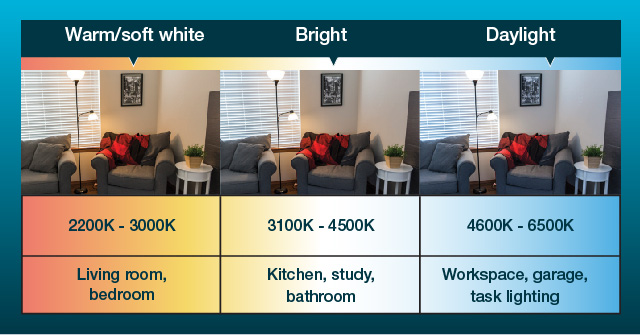LED 전구 자주 묻는 질문
에너지 효율적인 LED 전구에 대한 자세한 내용은 아래를 참조하십시오.
-
어떤 유형의 LED 조명을 사용할 수 있습니까?
현재 LED 전구를 사용하는 조명 기구, 나사식 교체 전구 및 장식용 조명 스트링이 있습니다.LED 전구는 기존 백열 전구보다 에너지 소비량이 80% 이상 적고 수명이 13~25년 더 깁니다
. -
LED 조명 제품은 밝기 조절이 가능한가요?
일부는 그렇지만 전부는 아닙니다.밝기 조절이 가능한 LED 전구 및 조명기구는 포장에 이러한 기능을 사용할 수 있다고 명시되어 있으며, 백열 전구용으로 설계된 조광기 조명기 또는 제어 장치와는 호환되지 않을 수 있습니다.기존 디머 조명기구나 컨트롤을 LED 조명 제품과 호환되는 것으로 교체해야 할 수도
있습니다.포장 또는 함께 제공되는 지침을 참조하여 LED 전구 또는 조명기가 조광 가능한지 확인하고 어떤 백열등 조광기 설비 또는 제어 장치가 제품과 함께 사용하도록 승인되었는지 확인하십시오.LED 산업이 성장함에 따라 완전히 호환되는 LED 전구 및 고정 장치가 신축 건물에 더 많이 보급될 것입니다.그때까지 새 LED 전구 또는 조명기가 기존 조광기 제품과 호환되는지 LED 조명 제품 제조업체에 문의하십시오
. -
LED 조명이 열을 생성합니까?
예, 하지만 다른 광원만큼 많지는 않습니다.백열등과 CFL 전구는 햇빛에서 나오는 열과 마찬가지로 실제 광선을 따라 이동하는 열을 생성하며, LED 조명은 훨씬 적은 에너지를 이러한 종류의 열로 변환합니다.하지만 LED 조명이 만들어내는 소량의 열은 시간이 지남에 따라 빛의 양과 질에 영향을 미칠 수 있습니다
.열이 성능에 미치는 부정적인 영향을 방지하기 위해 LED 제품 제조업체는 열 흡수원을 설계에 통합합니다. 이 히트싱크를 통해 전도를 통해 LED에서 다른 매체로 열이 전달됩니다.
-
LED 전구에는 어떤 색상의 빛을 사용할 수 있습니까?
LED 전구는 일반적으로 세 가지 범주로 분류되는 다양한 색조로 제공됩니다.
- “따뜻한” 조명, 백열 전구의 노란 빛에 필적하는 부드러운 조명
- “밝은 흰색”, 일반적으로 독서에 사용되는 흰색 조명
- “차가운” 또는 “주광”, 일반적으로 업무나 사무용으로 사용되는 약간 푸르스름한 조명
색온도 눈금에서 켈빈 측정값이 낮을수록 빛이 더 노란색으로 보입니다.켈빈 측정값이 높을수록 빛이 더 흰색이나 파란색으로 보입니다
.- 백열 전구의 색상과 일치시키려면 2200~3000K 사이의 전구를 찾으십시오.
- 더 하얀 빛을 원한다면 3100~4500K 사이가 좋습니다.
- 더 푸른 백색광을 원한다면 4600~6500K 사이의 전구를 찾으십시오.

-
내 필요에 맞는 LED 전구를 선택하려면 어떻게 해야 합니까?
다음의 간단한 단계에 따라 LED 전구를 선택하세요.








